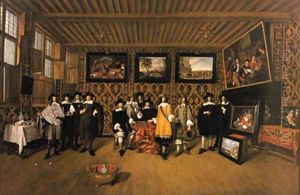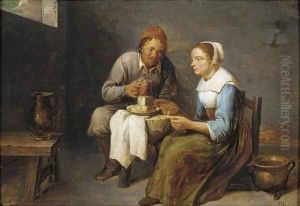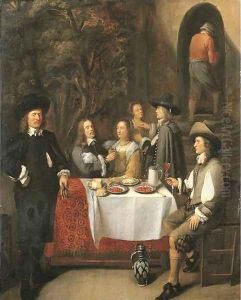Gillis Van Tilborch Paintings
Gillis van Tilborch was a Flemish painter born in 1625, known for his contributions to the Baroque period, especially in the genre of genre painting and portraiture. Although not as widely recognized as some of his contemporaries, van Tilborch played a significant role in the development of Flemish painting during the 17th century. His works often depicted lively interior scenes, taverns, and gatherings, characterized by a keen observation of social interaction and detail.
Van Tilborch was believed to have been born in Brussels, and he likely received his artistic training there. The specifics of his education remain somewhat unclear, but it is known that he became a master in the Brussels Guild of Saint Luke in 1654, indicating his professional recognition within the artistic community. His style shows the influence of other Flemish masters like David Teniers the Younger, with whom he is sometimes confused, due to the similarities in subject matter and style.
Throughout his career, van Tilborch specialized in genre scenes, which were popular among the middle-class patrons in Flanders and abroad. These paintings often featured elegant figures in contemporary dress, engaged in leisure activities, showcasing van Tilborch’s skill in capturing the textures of fabrics and the subtleties of human expression. While his genre paintings were his most celebrated works, he also produced a number of portraits which are notable for their refined detail and psychological depth.
Despite his success, Gillis van Tilborch's works were often overshadowed by those of his more famous contemporaries. However, his contributions to the Flemish painting tradition have been reassessed and appreciated in more recent years. Van Tilborch died in 1678, leaving behind a body of work that provides valuable insight into the social and cultural life of 17th-century Flanders. His paintings can be found in various museums and collections around the world, testament to his skill and enduring appeal.


